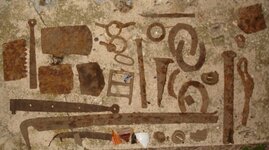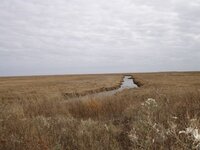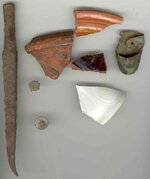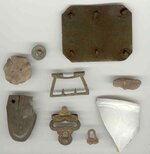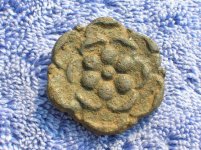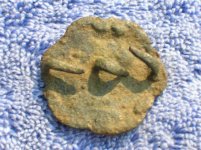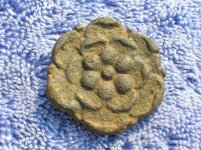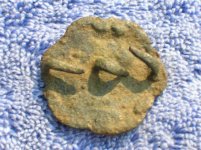artyfacts
Bronze Member
- May 1, 2010
- 1,144
- 1,239
- 🥇 Banner finds
- 3
- Detector(s) used
- Whites DFX, MX7, Minelab Manticore
- Primary Interest:
- All Treasure Hunting
Spent five hours on a new site today with a large cellar hole, on a hill, in the woods, along the shoreline. I think the site was worked by someone with an older machine. All of iron was left behind, big stuff and small between 8 and 15 inches deep. The non ferrous items were found next to the iron. When I walked up to the site the first thing I dug was a broken axe head and found the button in the same hole I thought the place was going to be loaded. I was wrong it was already picked. I'm still happy with the iron and the few other items I found. The buckle was found on the top of the log splitter in the same hole. The buzzer is the third I have dug in two different sites in the last month. The suspender buckle still has some gilt left on it and its a little on the fancy side. The brass item is two inches long. I know it was nailed to the tip of something. Any Ideas? The little iron spike could it be to a spear or is it a awl? The full axe was sweet, 7 1/2 inches long. Its going to clean up nice, I like finding axes. Lantern parts, scythe, draw knife and -----the ticks are out. Arty
Attachments
Upvote
0


